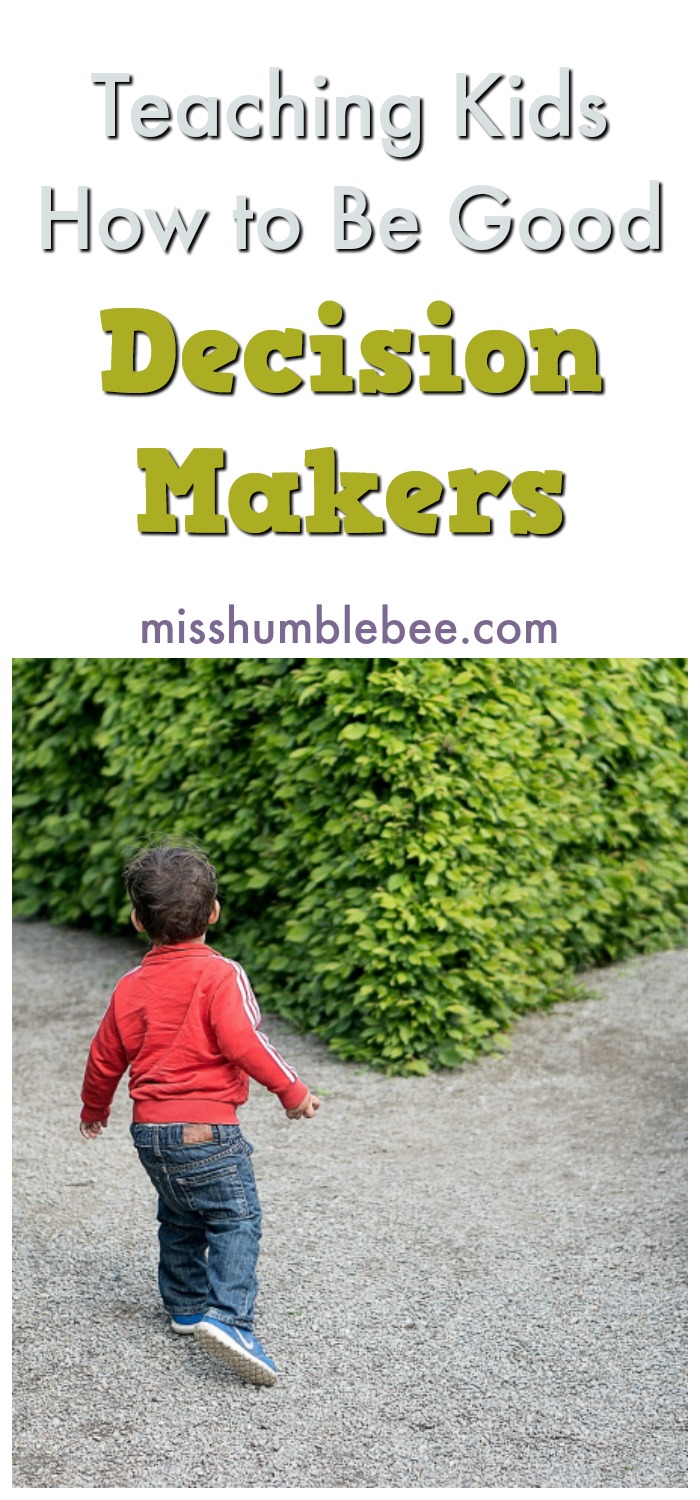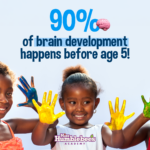For the majority of your child’s early years, you are the main decision maker in her life. You decide what and when she’ll eat, what she’ll wear, what her day will look like, and when she’ll go to bed. However, part of your job as a parent is to teach your child to become independent and capable of taking care of herself, and the earlier you begin this process, the easier and more successful it will be for all involved.

Teaching Kids How to Be Good Decision Makers
One of the most important skills you can teach your child is how to make good decisions. Daily life is created by making hundreds of decisions. Most are small and some are big, but they all come together to make your life what it is, so learning how to make smart decisions is not just important, it’s vital.
Start Early and Small
Giving your young child plenty of decision-making opportunities in a controlled environment is a good way to start. A child as young as two can begin making simple decisions. Let him pick between two or three clothing choices in the morning, give him a couple of different breakfast options, or offer several books from which to choose his bedtime story.
These choices allows your child to practice making decisions in a relatively consequence-free way that will help him gain confidence in his ability to make choices for himself.
Teach Your Child That Decisions Have Consequences
Of course, many decisions are not free from consequences and at some point your child will outgrow the need for you to narrow his options to two or three safe ones. At some point your child will have to learn that making a decision can lead to outcomes he may or may not have anticipated. By learning this, he can begin to take into account what might happen in the future based on the choice he makes now.
For example, if you give your child free reign to choose an outfit, he may pick something that won’t work well with the current weather. Perhaps he’ll choose a pair of shorts when it’s 15 degrees out. This gives you the opportunity to talk with your child about the consequences of that choice. If he chooses to stay in the shorts, he will be extremely cold if he has to go outside. If he has to stay outside for any length of time, the consequences could be worse, resulting in frostbite or other injury.
Allow Your Child to Fail
How far you allow your child to experience the consequences of his actions will depend on a number of factors, most notably his age and how severe the consequence might be. While a four-year-old isn’t old or mature enough to fully understand what might happen if he wears shorts outside in the middle of winter, a preteen boy is another story (and will most certainly test you on this at some point in your parenting journey).
At some point, when talking through a decision doesn’t change your child’s mind, allowing him to experience the negative consequences of his decision can be a powerful lesson. That’s why it’s wise to start when your child is young and you have some control over the outcomes. Allowing your child to experience the consequences of a minor bad decision will hopefully result in your child making careful decisions when the stakes are higher.
Brainstorm Potential Consequences
Understanding that decisions have consequences is one thing, but figuring out what those consequences might be is another. Helping your child determine potential outcomes before they occur can be a challenge, but it’s a good exercise to put into practice.
It’s important to note that although we usually think of the word “consequence” as having a negative connotation, it’s true definition is simply the result of an action. In other words, whatever decision your child makes can have negative or positive consequences. That’s why brainstorming a list of pros and cons is a great way to think about what might happen when a decision is made.
Start by using hypothetical situations your child might find himself in. For instance, you might talk through the potential outcomes of eating a snack right before dinner. Some of the pros might be that it will satisfy your child’s hunger and the food might be more desirable than whatever is for dinner. The cons might be that he won’t be hungry for dinner, he won’t get the balanced nutrition that dinner will provide, or he won’t be allowed dessert if he doesn’t eat his supper.
By practicing thinking through the consequences of his actions with you, your child will develop the skills to do it on his own. Of course not every decision will need to go through a big process to determine the best course of action, but by learning how to think through decisions, your child will be equipped with the tools he’ll need when an important or difficult decision does come up.
Help Your Child Understand That Less Than Perfect Decisions are Still Okay
Some people are naturally more decisive, while others can agonize over even the simplest decisions. If your child tends to be in the latter group, it’ll be important for her to learn that no decision is perfect. Fear of making the wrong decision can be paralyzing, but by not choosing anything, she’s making a decision in itself.
As your child gains practice judging the pros and cons of a decision, make sure to point out that every decision comes with positives and negatives. She can make a good choice and there can still be parts of that decision that aren’t exactly what she hoped for. However, that doesn’t necessarily mean she made a bad decision.
With plenty of practice and the guiding hand of Mom or Dad, your child can grow into a confident and competent decision maker. It’s a skill you’ll never regret teaching your child.










